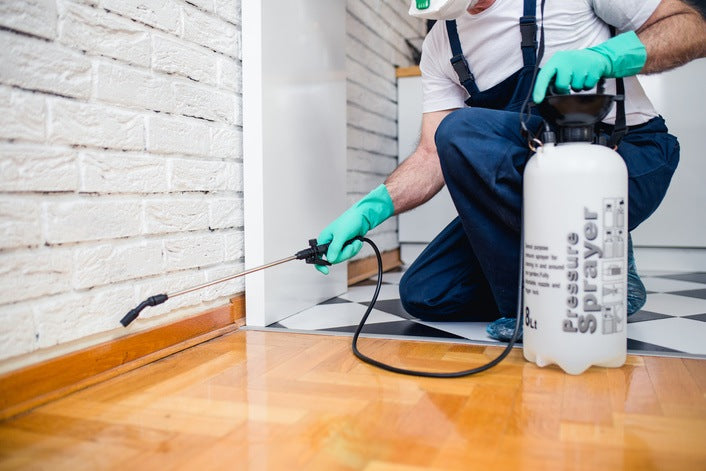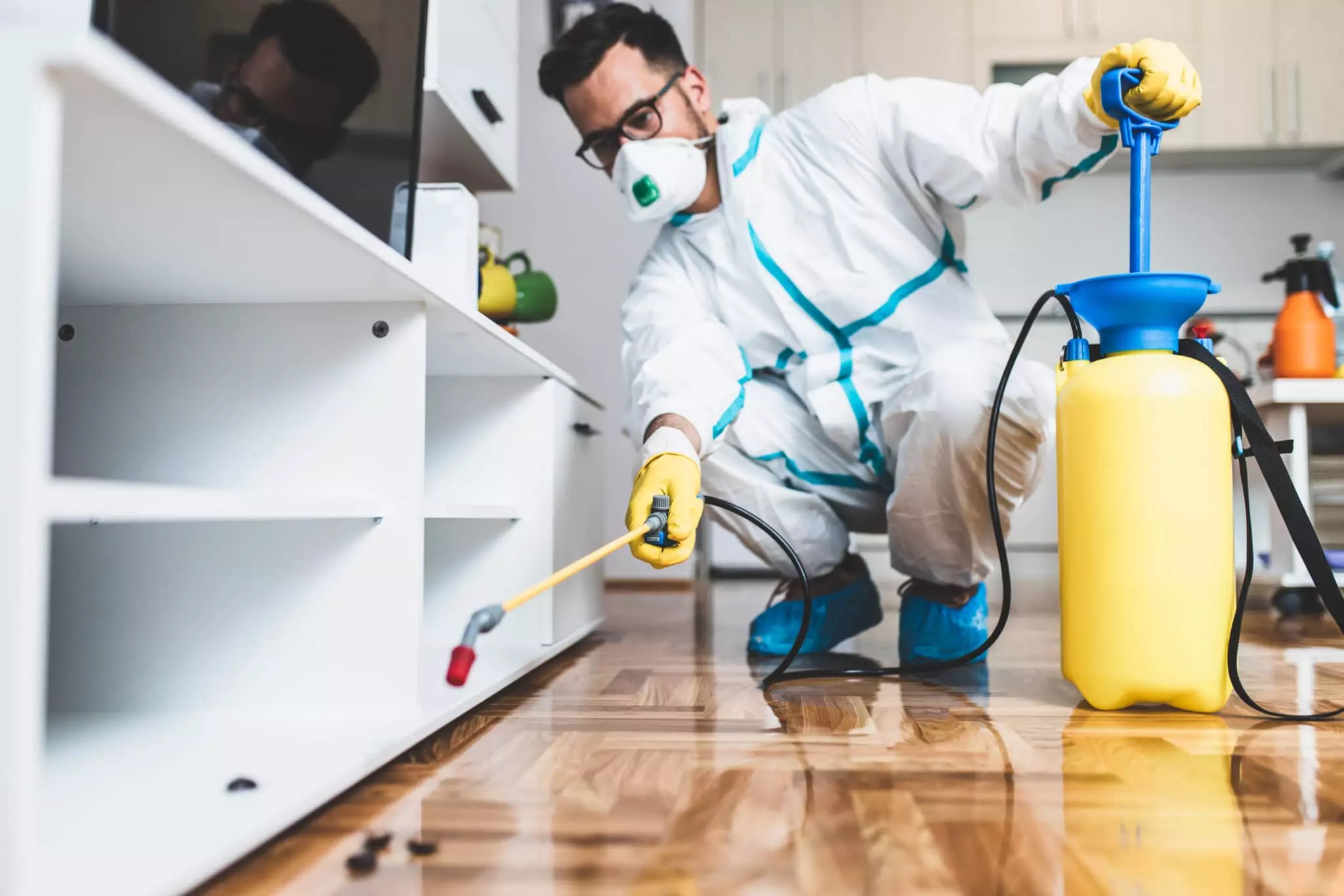Exploring Infestation and Treatment Techniques on the planet of Parasite Control
The landscape of pest control incorporates a myriad of obstacles, particularly as problems of common household insects remain to develop. Recognizing the habits and reproductive patterns of these problems is essential for establishing efficient treatment strategies. By incorporating safety nets with sophisticated management strategies, such as Integrated Insect Administration (IPM), property owners can better protect their atmospheres. The efficiency of these approaches might differ considerably based on specific circumstances. What hidden elements add to the success or failure of these methods in different settings?

Usual Home Pests
When it pertains to managing our space, understanding usual home insects is crucial. These bugs not just interrupt our convenience yet can likewise pose health risks and damage residential or commercial property. The most widespread family parasites include ants, roaches, rats, termites, and bed insects.
Ants, often seen foraging in kitchen areas, can contaminate food and establish large colonies. Rodents, consisting of mice and rats, can trigger structural damages and lug illness like hantavirus and salmonella.
Identifying the indicators of these pests, such as droppings, nests, or bite marks, is necessary for very early intervention (Pest Control Lockhart). Correct cleanliness techniques, securing entry factors, and keeping a clutter-free setting are efficient preventative steps. By identifying these usual house parasites and recognizing their behaviors, home owners can take proactive steps to minimize infestations, making certain a much healthier living atmosphere
Recognizing Bug Infestations
Bug invasions can escalate promptly, transforming a small nuisance into a substantial trouble if not dealt with promptly. Typical factors adding to infestations consist of poor cleanliness, architectural vulnerabilities, and seasonal changes that drive parasites inside.
Identifying the sort of bug is essential, as different types show different behaviors and reproductive prices. Rats may develop nests in concealed areas while bugs like roaches thrive in wet environments. Early detection typically rests on acknowledging indicators such as droppings, munch marks, or unusual noises, which can show a trouble before it comes to be extreme.
Environmental conditions likewise play an essential role in insect spreading. Cozy, humid climates can help with the rapid growth of parasite populaces, while modifications in landscape design or building and construction can inadvertently produce helpful environments. As a result, routine assessments and preventative steps are extremely important to reducing the danger of problems. An educated method to recognizing these characteristics prepares for reliable insect management techniques in the future.
Treatment Methods and Strategies
Effective treatment methods and methods are essential for mitigating pest problems and restoring a secure atmosphere. A diverse approach is usually best, integrating chemical, organic, and mechanical approaches tailored to the particular parasite and the seriousness of the invasion.
Chemical therapies consist of the usage of insecticides and herbicides, which can efficiently remove pests. Appropriate application and adherence to security guidelines are important to minimize threats to humans and non-target microorganisms. Integrated Parasite Administration (IPM) motivates the sensible use of chemicals as a last option, counting rather on tracking and limit degrees to figure out intervention demands.
Biological control methods include presenting natural killers or bloodsuckers to minimize bug populaces. This approach is progressively popular, especially in farming settings, as it advertises ecological sustainability.
Mechanical methods, such as catches and obstacles, provide prompt remedy for bugs without introducing chemicals. Options include sticky traps for pests or physical barriers for rodents.
Ultimately, the choice of therapy method should consider the specific insect, the environment, and possible effect on human health and environments. A well balanced mix of these methods can properly handle infestations while advertising long-term bug control options.
Preventative Steps for Homes
Proactively dealing with bug issues before they rise is important for preserving a healthy and balanced home setting (Pest Control Lockhart). Applying effective preventive steps can considerably decrease the chance of infestations, eventually guarding both your residential or commercial property and health

Correct landscape design likewise plays an essential role in prevention. Maintaining shrubs and trees cut away from your home lowers the opportunities of parasites discovering their method inside your home. In addition, guarantee that drain systems are functioning successfully to stop standing water, which can pull in mosquitoes and various other pests.
Last useful site but not least, regular evaluations are advisable. Routinely looking for signs of insect activity allows for very early treatment. By taking on these safety nets, property owners can create an atmosphere that is much less hospitable to bugs, thus boosting their total quality of life and minimizing the demand for considerable bug control treatments.
Commercial Insect Control Strategies
An extensive technique to commercial parasite control is crucial for companies aiming to preserve a secure and hygienic environment. Reliable strategies include a mix of routine examinations, staff member training, and the application of Integrated Insect Monitoring (IPM) techniques.
Regular inspections make it possible for very early discovery of parasite activity, enabling for timely intervention. Organizations ought to develop a routine timetable for these assessments, concentrating on high-risk locations such as kitchens, storage spaces, and waste disposal websites. Worker training is equally critical; team needs to be informed on the indications of insect problems and the significance of reporting them immediately.
Applying IPM methods useful reference assists mitigate insect issues sustainably. This consists of environment modification, such as securing entry factors and lowering find more mess, in addition to utilizing all-natural deterrents prior to resorting to chemical therapies.

Additionally, working together with a licensed parasite control provider ensures accessibility to specialist expertise and sophisticated therapy alternatives. This partnership can bring about personalized bug control prepares customized to the certain requirements of the organization, minimizing risks and enhancing general efficacy. Ultimately, an aggressive and enlightened approach fosters a pest-free environment, safeguarding both public health and wellness and business track record.
Verdict
Finally, effective pest control necessitates a detailed understanding of common household pests and their habits, paired with targeted treatment approaches. Applying precautionary measures alongside treatment strategies such as Integrated Pest Management and biological control enhances the capacity to reduce infestations. Routine inspections and a mix of chemical and mechanical solutions better add to preserving pest-free atmospheres. Eventually, an all-around method to pest monitoring is important for guarding living rooms from undesirable burglars.